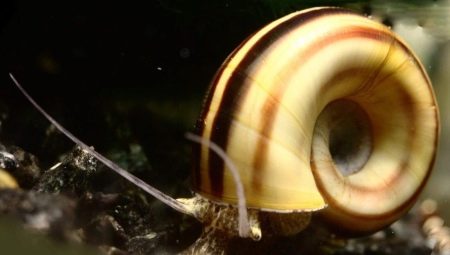The birthplace of a marisa snail is in South and Central America. These are mollusks that prefer to live in fresh water, but can also settle in water areas with a low salt content, although in such conditions they do not breed. Currently, the mariza snail is known to most aquarists, because it can become not only the object of decoration of the aquarium, but also benefit its owner.
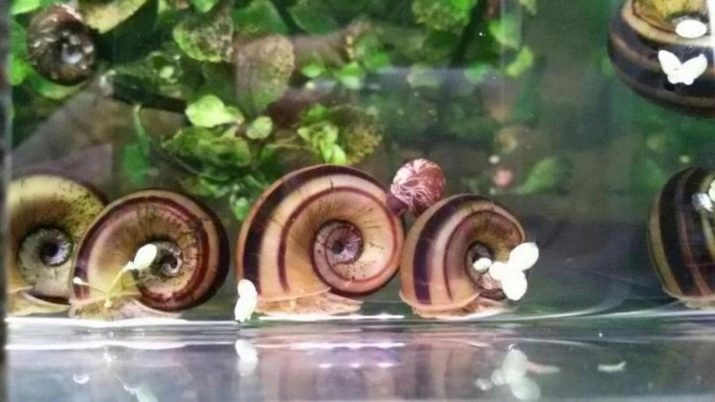
Description
The shell of this mollusk is decorated with 3-4 spiral turns. In adults, the carapace has a flat shape due to the spine that does not rise above the whorls. In young snails, the spine is raised, so they can be distinguished by a spherical shell. The transverse stripes on the shell are located next to the hole, which has a miniature plate that serves as a shelter for the shell of the shell.
The color may be different. Usually the color ranges from dark yellow to brown. Spiral stripes are always dark - black or brown. Sometimes there are specimens without stripes or with a plain shell. The body of the snail is whitish, yellow, gray or dark patterns are possible on it. A feature of the marisa is its compact breathing tube, which is smaller in size than other ampoules. In height, these creatures exceed 5 cm in width - 2 cm.
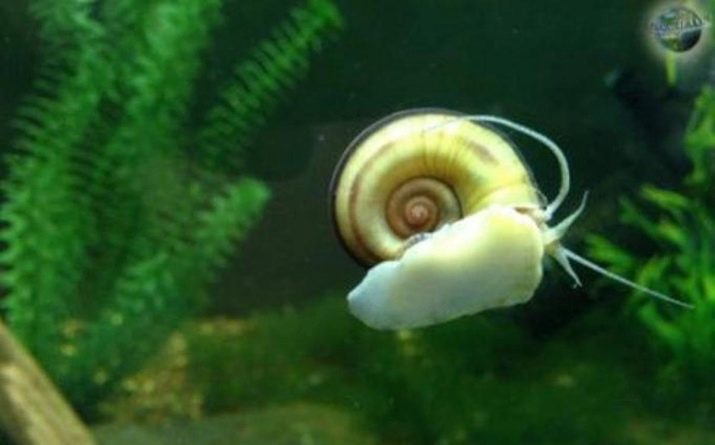
These animals are appreciated by aquarists not only for their aesthetic data, but also for the benefits that they can bring to their owner, namely:
- experts have not identified a single case of snail allergy, so this is a great pet for animal lovers who do not have the opportunity to have a pet because of an allergy;
- molluscum mucus is considered healing, for example, it can heal abrasions and scratches, you can let the snail crawl a little along the damaged area of the skin, then the wound will heal faster;
- unlike cats, dogs or rodents, snails do not spoil anything in the house, do not smell and do not make noise; and Mariz’s amazing appearance can calm her down - the mesmerizing look of crawling black and yellow snails tunes in for positive emotions and makes one forget about fears and anxieties.
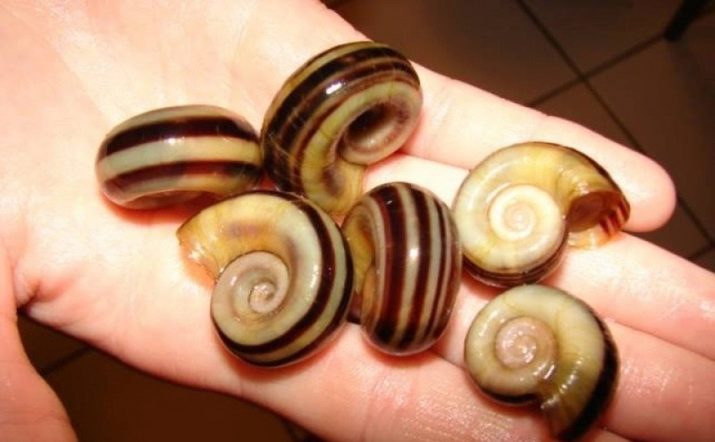
Care and maintenance
In the natural environment, marises live in stagnant water bodies or rivers with a very slow flow. They like to settle in shallow water, abundantly overgrown with vegetation. If you create such conditions in the aquarium, then the snails will live a long comfortable life.
However, when planting algae, keep in mind that marises are very voracious. In a short time they will destroy most of the greenery, so do not plant rare expensive plant specimens in the aquarium.
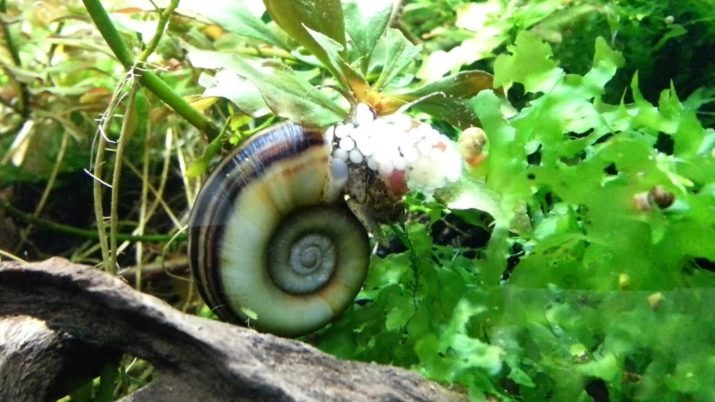
Favorable temperature limits for marisa are + 21– + 25 degrees, acidity is 7.5–7.8, and hardness is moderate. If the water is soft, then the mollusks have problems with the formation of a shell, so avoid too soft indicators. These creatures have a habit of escaping from the aquarium, so take care of the cover for the artificial pond. But keep in mind that air must remain between the cover and the water surface. The fact is that these individuals can rise to the surface and breathe using a special tube.
During the content of mariza, refuse treatment of neighboring fish with preparations containing copper - This element is fatal both for maris and for other snails. If you can’t avoid using the product, put the clams in a separate container for the duration of the treatment. In an artificial reservoir, the maris themselves find their food. Dead fish, rotted plant fragments, bacterial plaque on the walls of the aquarium and decorations become tidbits. But it is important to additionally feed these voracious creatures. As an additive, vegetables, for example, cucumbers, zucchini, leaf lettuce, are suitable. Mollusks will not refuse tablet food for catfish.
Important! If the marizu is left without food, then it is able to completely destroy all green spaces. To avoid this, it is recommended to regularly lay flake particles for the aquarium on the bottom so that the snail always has access to food.
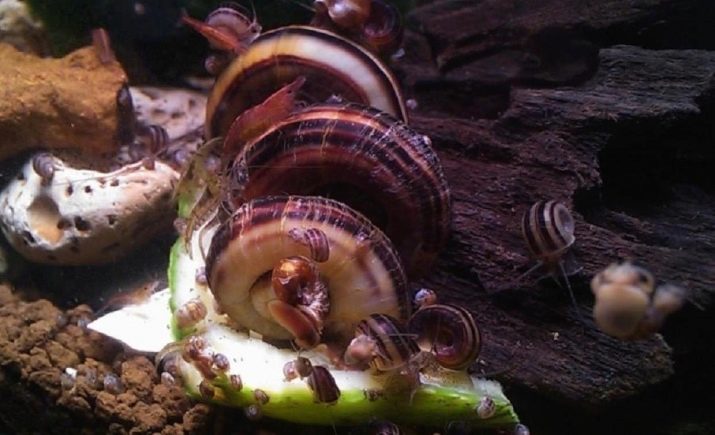
Compatibility
These are peaceful and friendly snails that get along well with most aquarium inhabitants.
To preserve the abundance of marises, avoid sharing them with labyrinths, cichlids, tetraodones, bots, gouras, badises and other species that will not refuse to be treated to mollusks.
With other snails, mariza can comfortably coexist, but do not let helena, which mariza will necessarily become prey, get into the common reservoir of a predatory snail. Eternal snail hunters are aquatic turtles.
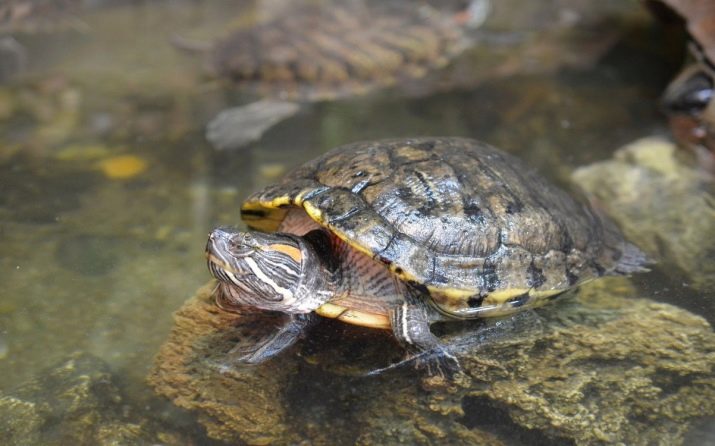
Mariza herself will not touch her neighbors, but she is able to eat fish eggs and other mollusks, so if necessary, breed aquarium fish, plant individuals in spawning. Peaceful catfish, neon, tetra, parsing, golden barbs will not harm the snail.
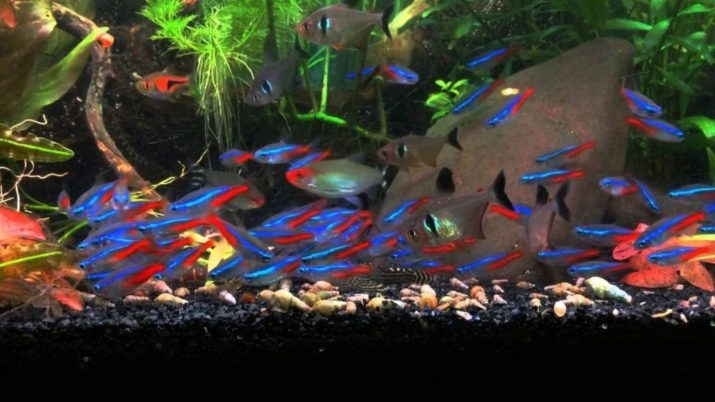
There may be a neighborhood with goldfish, but these wayward creatures, in a bad mood, can bite a mariza. As for plants, then mariza can be settled with any representatives of the flora, but it is important to take into account the eternal hunger of the mollusk and try not to plant samples in the aquariumwith which the owner will be sorry to part.
How to breed?
Unlike many of its relatives, marises belong to heterosexual snails. In addition, females and males are fairly easy to distinguish from each other. So, males have a pale beige body with brown spots, their lovers have a chocolate or dark brown body. Mating can last several hours.After that, the lady lays eggs on the leaves of plants or on hard surfaces. Outwardly, the eggs look like a jelly capsule with an egg enclosed inside. After 14–20 days, the calves will hatch from the eggs and crawl throughout the artificial pond.
Survival survival rate is low. They often die, becoming prey for fish, falling into the filter or in the absence of feed. To preserve as many individuals as possible, precautionary measures must be taken already at the spawning stage. It is recommended to carefully move the eggs into a separate container and wait until the hatched mari grow. If the amount of caviar is too large, then the excess can be removed manually.
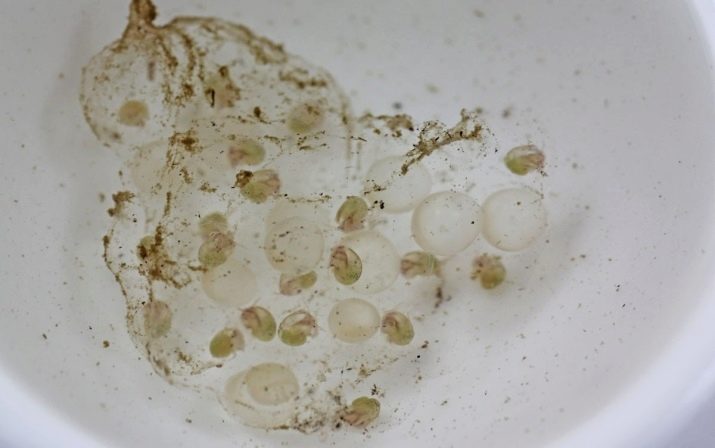
You will learn more about the mariza snail by watching the following video.
